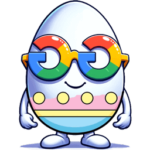In today’s visually-driven world, a digital poster is a powerful tool for communication and marketing. Whether you’re promoting an event, sharing information, or expressing your creativity, digital posters can capture attention and convey messages effectively. In this guide, we will explore how to create compelling digital posters, the tools you need, and some design tips that can elevate your work.
What is a Digital Poster?
A digital poster is a modern version of traditional posters that exists in a digital format. Unlike printed posters, digital posters are designed for screens, making them easily shareable and accessible. They can be created for various purposes, such as advertising events, informing audiences, or showcasing art. As a result, the digital format allows for more dynamic content, including animations and interactive elements, which can engage viewers more effectively.
Moreover, digital posters can be distributed via social media, websites, and emails. This accessibility broadens the audience reach compared to conventional posters. Consequently, understanding how to design a digital poster is essential for anyone looking to make an impact online. By mastering this skill, you can effectively communicate your ideas and capture your audience’s attention.
Why Use Digital Posters?
Digital posters offer several advantages over traditional printed materials. First, they are cost-effective. When you create a digital poster, there are no printing costs involved, and you can easily edit your design without the need for new prints. This flexibility is especially beneficial for events or promotions that may change over time.
Furthermore, digital posters can reach a global audience instantly. By sharing your designs online, you can connect with people worldwide, increasing your chances of engagement. Additionally, digital posters allow for easy tracking of performance through analytics. This means you can see how many people have viewed or interacted with your poster, providing valuable insights for future projects.
Tools for Creating Digital Posters
When it comes to designing digital posters, you have various tools at your disposal. Some popular graphic design software includes Adobe Photoshop, Canva, and Adobe Illustrator. Each of these tools offers unique features that cater to different skill levels. For instance, Canva is user-friendly and great for beginners, while Photoshop provides advanced editing capabilities for more experienced designers.
In addition to graphic design software, online platforms like PosterMyWall and Visme offer templates specifically for digital posters. These templates can save time and help you create professional-looking designs quickly. By utilizing these tools, you can streamline your creative process and focus on bringing your ideas to life.
Design Principles for Digital Posters
When designing a digital poster, several design principles should be considered. First, clarity is crucial. Your poster should convey its message clearly and concisely. Avoid cluttering your design with too much text or too many images. Instead, focus on key points and use visuals to enhance your message.
Next, consider the color scheme of your digital poster. Colors evoke emotions and can significantly impact how your message is received. For example, warm colors like red and orange can create excitement, while cooler colors like blue and green can evoke calmness. Moreover, ensure that your text is legible against the background. Contrasting colors can help your message stand out, making it easier for viewers to read.
Utilizing Fonts Effectively
Choosing the right fonts for your digital poster is equally important. Fonts can set the tone of your design, so select styles that align with your message. For example, playful fonts work well for children’s events, while sleek, modern fonts are better suited for professional presentations.
In addition, limit yourself to two or three font styles to maintain consistency. Overusing different fonts can create confusion and distract from your message. Furthermore, pay attention to font sizes; headings should be larger to grab attention, while body text should be easy to read without overwhelming the design.
Incorporating Imagery and Graphics
Images and graphics play a vital role in the success of your digital poster. They can communicate your message more effectively than text alone. When selecting images, choose high-quality visuals that are relevant to your content. Additionally, ensure you have the rights to use any images you include.
Moreover, consider using illustrations or icons to enhance your design. These elements can add a unique touch and make your poster more engaging. Remember to balance text and imagery; too many images can make your poster look cluttered, while too much text can make it dull. A harmonious blend of both will create a visually appealing design.
Enhancing Engagement with Interactivity
One of the exciting aspects of digital posters is the potential for interactivity. Incorporating elements like clickable links, videos, or animations can engage your audience and encourage them to explore your message further. For example, a QR code can lead viewers to a website or social media page, providing additional information about your event or campaign.
Furthermore, consider adding animations to draw attention to key elements. Subtle animations, like fading in text or images, can make your poster feel more dynamic. However, it’s essential to keep animations simple and not overdo them, as excessive movement can distract from the main message.
Best Practices for Sharing Digital Posters
Once you’ve created your digital poster, it’s time to share it with the world. First, consider the platforms you’ll use to distribute your poster. Social media platforms like Instagram, Facebook, and Twitter are great for reaching a large audience quickly. Tailor your content to each platform to maximize engagement.
Additionally, think about the timing of your posts. For instance, if you’re promoting an event, share your poster well in advance to build excitement. However, a last-minute reminder can also be effective. Be sure to monitor the engagement on your posts and respond to any comments or messages to foster a connection with your audience.
Conclusion: Making Your Digital Poster Stand Out
In conclusion, creating a compelling digital poster requires careful planning, design skills, and an understanding of your audience. By utilizing the right tools and following essential design principles, you can craft a poster that effectively communicates your message. Remember to incorporate engaging visuals, choose your fonts wisely, and consider adding interactive elements to enhance viewer experience.
Ultimately, the goal of a digital poster is to capture attention and convey information in a visually appealing manner. By focusing on clarity, creativity, and engagement, you can create stunning digital posters that resonate with your audience. Start experimenting with your designs today, and watch your ideas come to life!








